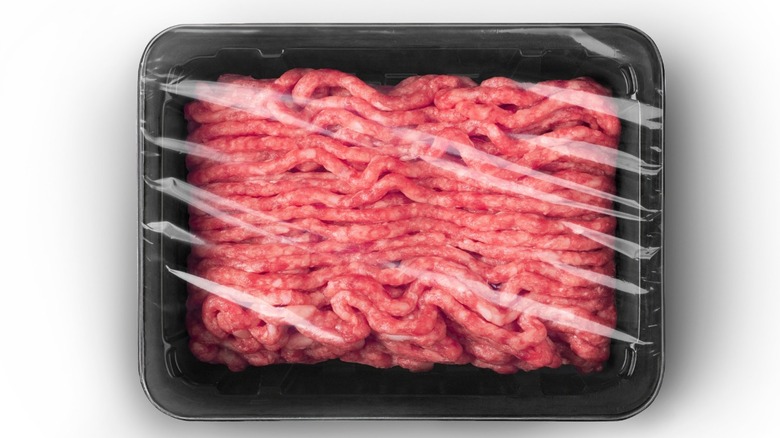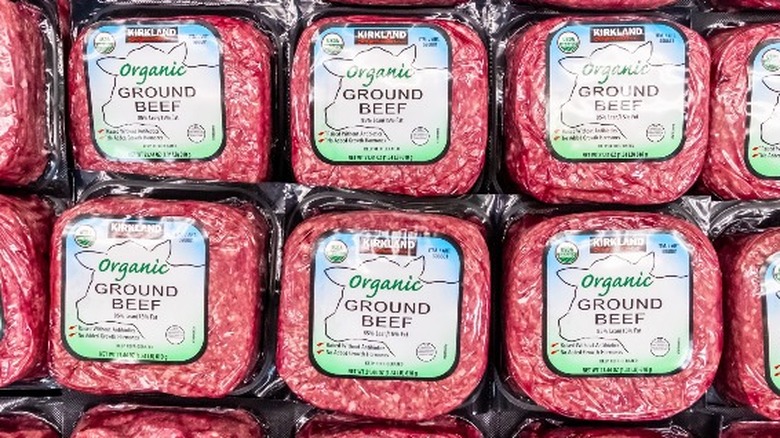Why You Should Think Twice Before Eating Prepackaged Ground Beef
Americans love their beef hamburgers. If you count yourself among one of those carnivores, chances are you ate an estimated 27 pounds of ground beef in 2020. Ground beef ultimately made up 46% of total retail beef sales that year (via Iowa State University).
According to the History Channel, while the modern-day hamburger came into being in the early 1900s, ground beef's origins can be traced back roughly 10,000 years ago in Mesopotamia when cattle first became domesticated. Fast-forward to the mid-1800s when Germans immigrating from Hamburg brought their meat preparation styles to the United States. This coincided at roughly the same time that an American doctor named James H. Salisbury suggested that consuming cooked beef patties could assist with digestive issues. As Americans began to adopt the "Salisbury steak," the meat grinder was also growing in popularity.
While you may eat ground beef, you might not have given much thought to what it actually is. Ground beef is made up of the "trimmings" of animal carcasses. The U.S. Department of Agriculture (USDA) states that, in order to meet federal standards, ground beef cannot contain more than 30% fat. How lean ground beef is categorized depends on the ratios of the kinds of trimmings used from bulls, cows, steers, and heifers (via Iowa State University).
The dangers of eating prepackaged ground beef
According to the USDA, eating pre-packaged ground beef that meets federal standards and is properly stored and prepared is not dangerous. However, Consumer Reports reported in 2015 on the potential dangers of ground beef, and they are pretty sobering. While all beef contains bacteria, the results of the study pointed out that ground beef is more at risk for contamination, especially for a dangerous strain of E. coli that can damage the small intestine. Ground beef tainted with this strain was the cause of most of the E. coli outbreaks between 2003-2012. Consumer Reports also reported that E. coli was the source of a 2019 outbreak tied to ground beef.
"Given the way most beef is produced from cows raised in feedlots, where for months thousands of cows may stand together in their own manure, it can be difficult to control the spread of disease-causing bacteria," said Jean Halloran, director of food policy initiatives at Consumers Union, the advocacy division of Consumer Reports. "Therefore, it's crucial that consumers are careful with how they prepare and consume ground beef."
If you purchase pre-packaged ground beef, be sure to take precautions, such as cooking it through to the center, never eating it raw or undercooked, making sure the ground beef has a USDA-inspected sticker on the package, and washing your hands and surfaces often when handling.


